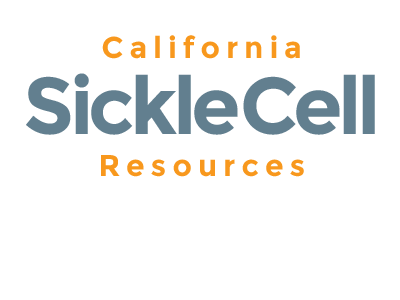Action
Cure Sickle Cell Initiative
Together we can cure Sickle Cell Disease!
National Heart, Lung, and Blood Institute just announced the Cure Sickle Cell Initiative, a collaborative research effort to accelerate the development of promising genetic therapies to cure sickle cell disease. The Initiative will engage researchers in academia and industry, clinicians, patients, and advocates to ensure its success.
Learn more at https://curingsicklecell.nhlbi.nih.gov
#CuringSCD

California Sickle Cell State
Action Planning Initiative

There is an urgent need to address the challenges in sickle cell disease (SCD) care in California that have contributed to an average life expectancy that is well below the U.S. average for the general and African American populations, and below the average for SCD populations in other states.1 There is a gap in quality of care as youth with SCD transition out of pediatric into adult care and a dearth of knowledgeable providers to adequately care for adults with SCD.2,3 There is also a lack of community awareness about SCD and sickle cell trait (SCT) and a lack of adequate follow-up for families where SCT is identified on Newborn Screening.
The California Sickle Cell State Action Planning Initiative brought together key stakeholders in California beginning in late 2017. The initiative is sponsored by the Pacific Sickle Cell Regional Collaborative, a Sickle Cell Disease Treatment Demonstration Regional Collaboratives Program funded by the Health Resources and Services Administration. We began with a review of already identified gaps in SCD care and SCT follow-up, are identifying additional gaps, and will establish public health priorities across the lifecourse for Californians affected by SCD and SCT. We will evaluate existing resources within California that might be leveraged to improve SCD care and propose additional services to address the distinctive needs of the population. We ultimately intend to establish a model for SCD care in California that will insure that patients with SCD receive comprehensive, patient-centered, coordinated, accessible, safe and high quality care, no matter where they live or seek care in the state. We will establish a model for SCT follow-up that will insure that individuals with trait have access to information that they can use to make informed decisions about their reproductive health and about the unique circumstances wherein SCT may have an impact on their overall health status. Our work will be informed by other sickle cell state action planning,4 recognizing the unique challenges associated with SCD and SCT in California.
Three workgroups – Outreach/Advocacy/Community Awareness, Policy and Clinical – have been formed and we held an in-person California Sickle Cell State Planning Initiative meeting on January 27, 2018 in Sacramento. The meeting provided opportunities for key stakeholders in California to:
- Share, coordinate, and collaborate in the development of activities to address challenges and improve outcomes in relation to SCD and SCT;
- Begin to create a stakeholder-supported California action plan for SCD and SCT that based on priorities that we will outline moving forward.
Fifty one stakeholders engaged in a day of lively discussions, presentations and large and small group activities. We will return to our in-depth planning within our steering committee, workgroups and writing groups, with the goal of having the California State Action Plan written by August of 2018. Please visit this space often for updates. We will be providing a link to materials associated with the California State Action Planning Initiative moving forward, including presentations from our face-to-face meeting and proceedings from our workgroup meetings. Please join one of the workgroups, and/or be sure to add your voice to the development of our Sickle Cell State Action Plan by responding to occasional surveys.
For more information, contact:
Marsha Treadwell, PhD
mtreadwell@mail.cho.org
or
Shalini Vora, MPH
SVora@c3dibd.org
References
- Paulukonis ST, Harris WT, Coates TD, Neumayr L, Treadwell M, Vichinsky E, Feuchtbaum LB. Population Based Surveillance in Sickle Cell Disease: Methods, Findings and Implications from the California Registry and Surveillance System in Hemoglobinopathies Project (RuSH). Pediatric Blood and Cancer. 2014 Dec;61(12):2271-6. doi: 10.1002/pbc.25208.
- Treadwell M, Johnson S, Sisler I, Bitsko M, Gildengorin G, Medina R, Barreda F, Major K, Telfair J, Smith WR. Self-efficacy and readiness for transition from pediatric to adult care in sickle cell disease. Int J Adolesc Med Health. 2015 Jul 30. doi: 10.1515/ijamh-2015-0014.
- Ballas S, Vichinsky E. Is the medical home for adult patients with sickle cell disease a reality or an illusion? 2015;39(2):130-3
- Smith D, Bach J, Lyon-Callo S, Young, W. A Public Health Strategic Plan to Address Sickle Cell Disease Across the Lifespan. Michigan Department of Health and Human Services. October 2015.
World Sickle Cell Day
June 19, 2018
World Sickle Cell Day commemorates the day on which the General Assembly of the United Nations officially adopted a resolution recognizing sickle cell disease as a global health concern. Sickle cell disease affects millions of children and adults around the world. Sickle cell disease can be life threatening and is recognized as, in fact, one of the main causes of premature death for children under the age of five in Africa.
In the U.S. sickle cell disease can negatively impact quality of life for both individuals affected and their family members. But individuals with sickle cell disease can thrive, as well, in the face of so many obstacles.
The Sickle Cell Center at UCSF Benioff Children’s Hospital Oakland honors the people with sickle cell disease, their families, and communities that we serve. We are a Center of Excellence in the provision of comprehensive care, in innovative research and in our focus to improve the lives of people with sickle cell disease both nationally and internationally.



